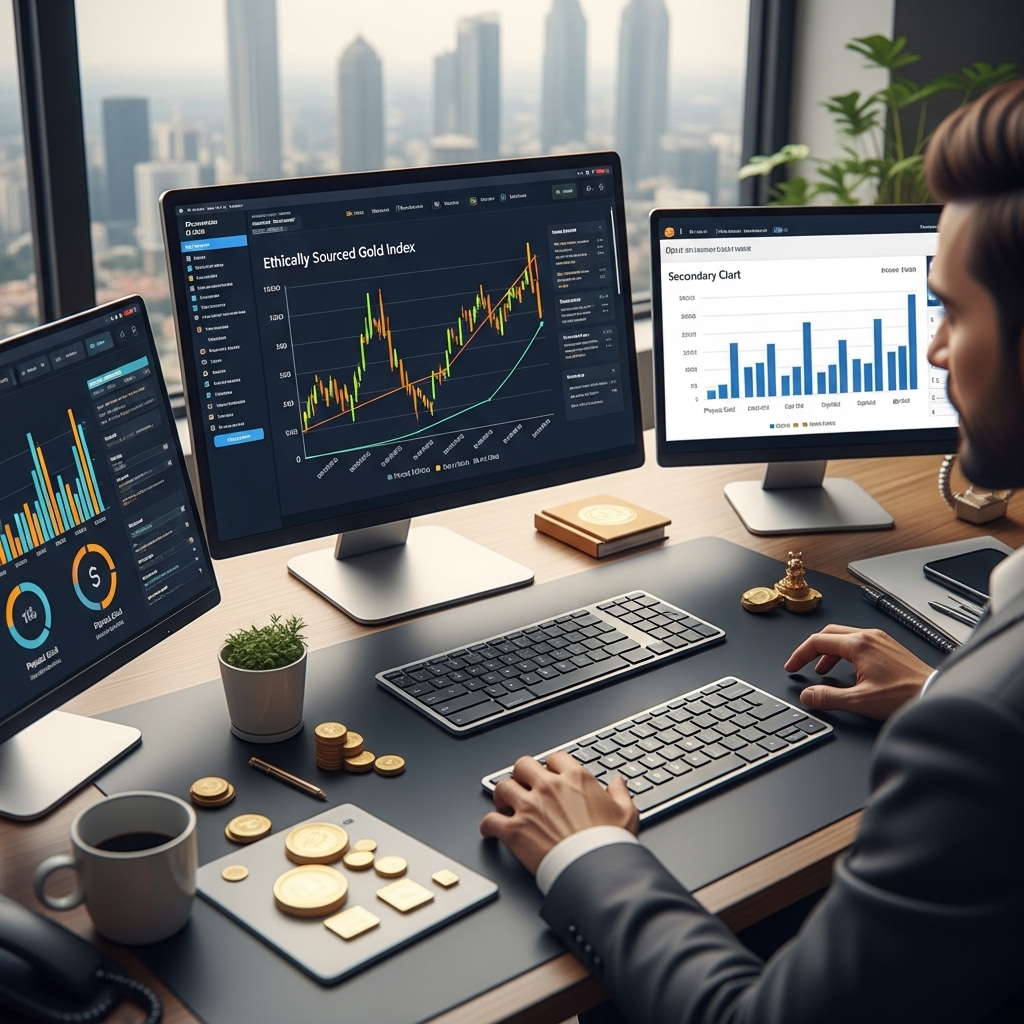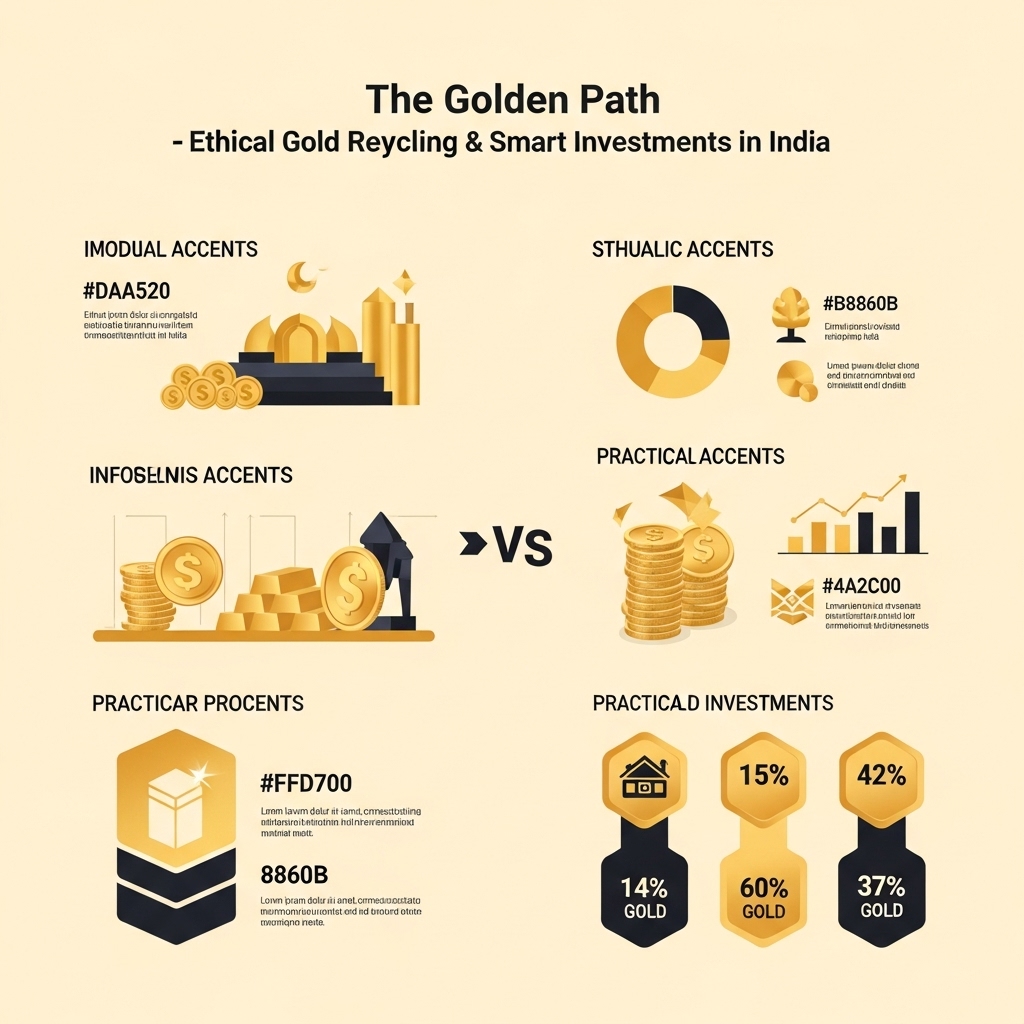Unearthing Hidden Value: Crematorium Gold and Its Market Impact
As global markets navigate persistent volatility and inflation concerns, gold continues to shine as a foundational asset in astute investment portfolios. While traditional mines and central bank holdings often dominate discussions of gold supply, savvy investors are increasingly recognizing the subtle yet significant influence of less conventional sources. Understanding these diverse origins isn’t just about curiosity; it’s about gaining a deeper insight into the true dynamics of the global gold market and uncovering potential new avenues for responsible investment.
This post delves into one fascinating, often misunderstood, segment: ‘crematorium gold’. We’ll explore the meticulous and highly ethical processes employed in countries like India to recover, refine, and reintroduce precious metals from cremated remains back into the supply chain. This isn’t merely a niche recovery effort; it represents a unique, sustainable, and increasingly relevant component of the global gold supply that can impact market trends and pricing.
For the gold investor, comprehending this intricate supply stream offers multiple benefits. It provides a more holistic view of available gold resources, shedding light on how various recovery methods contribute to overall supply-demand equilibrium. Furthermore, as Environmental, Social, and Governance (ESG) considerations become paramount, understanding ethical gold recycling aligns perfectly with responsible investing principles. Join us as we uncover the nuances of this remarkable process, analyze its potential influence on market trends, and equip you with insights to refine your gold investment strategy.
Gold Market Analysis and Key Insights
Gold, a timeless asset, holds immense cultural and economic significance in India, serving as a primary store of wealth and a hedge against economic uncertainties. The ethical recycling of crematorium gold introduces a unique and compelling dimension to the nation’s precious metals market, aligning traditional investment appeal with contemporary ethical considerations.
India’s Enduring Gold Affinity
India’s relationship with gold is deeply rooted in tradition, spirituality, and a pragmatic understanding of its value as financial security. This cultural affinity fuels consistent domestic demand, distinguishing the Indian market from global trends driven purely by economic indicators. Gold is often a key component of family wealth and a significant part of life events, ensuring a resilient buyer base.
Ethical Sourcing and ESG Appeal
The ethical recycling of crematorium gold presents a novel investment proposition, particularly appealing to a growing segment of environmentally, socially, and governance (ESG) conscious investors. Unlike newly mined gold, which can carry environmental or social baggage, this recycled gold offers a transparent, conflict-free, and culturally sensitive alternative, potentially commanding a premium for its traceable and ethical provenance.
Domestic Supply Chain Resilience
By leveraging an internal source of gold, India enhances its domestic supply chain resilience. This reduces reliance on imports, mitigates exposure to global geopolitical risks affecting mining regions, and contributes to a more self-sufficient gold economy, creating a stable and unique investment niche within the broader market.
Current Gold Market Trends and Data: Globally, gold continues to be favored as an inflation hedge and a safe-haven asset amidst geopolitical instabilities and economic uncertainties. Despite fluctuating interest rates, its appeal as a wealth preserver remains strong. In India, sustained domestic demand, particularly during festive seasons, often provides a floor to prices, complementing global market dynamics.
Investment Benefits and Considerations: Investing in ethically recycled crematorium gold offers portfolio diversification, a hedge against inflation, and the tangible security of a physical asset. The ethical narrative adds significant value, potentially attracting investors seeking responsible avenues. Considerations include verifying the recycling process’s ethical integrity and purity, as well as typical gold market volatility.
Expert Recommendations: Financial advisors suggest a long-term view for gold investments. For those considering crematorium-sourced gold, due diligence on the recycling entity’s certifications and transparency is paramount. Diversification across different asset classes, with a strategic allocation to gold (including this ethical variant), is advised to balance risk and reward.

Gold Investment Strategies and Options
Investing in gold, especially that ethically recycled from crematoriums, offers a unique blend of financial security and a socially conscious asset. Diverse avenues exist for integrating gold into one’s portfolio, each with distinct characteristics.
Physical gold, such as coins or bars, provides direct ownership and a tangible asset, appealing to those valuing the metal’s intrinsic worth and origin. However, it incurs storage, insurance, and potential liquidity challenges. Alternatively, Gold Exchange Traded Funds (ETFs) and Exchange Traded Commodities (ETCs) offer convenient, liquid exposure to gold prices without physical possession, ideal for smaller investments or frequent trading. For Indian investors, Sovereign Gold Bonds (SGBs) are a compelling choice, offering interest payments, capital appreciation linked to gold prices, and tax benefits, backed by the government, albeit with lock-in periods. Investing in gold mining stocks offers leverage to gold price movements but carries additional company-specific risks beyond the metal’s performance.
Regarding risk assessment and portfolio allocation, gold traditionally serves as a safe-haven asset, hedging against inflation, currency devaluation, and geopolitical instability. A typical portfolio allocation of 5-15% can provide diversification and reduce overall volatility. While gold prices can fluctuate, its long-term stability often contrasts with equity markets.
Comparing investment methods, physical gold offers security of possession, SGBs provide income and government backing, while ETFs prioritize liquidity and low cost. Market timing in gold is notoriously challenging; a long-term, disciplined approach like dollar-cost averaging is generally more effective than attempting to predict short-term peaks and troughs. Macroeconomic indicators, such as interest rates, inflation, and global instability, should inform, rather than dictate, investment decisions, emphasizing gold’s role as a strategic, not speculative, asset.
Market Performance and Outlook
Historically, the ethical recycling of gold from cremated remains, exemplified by the ‘How Crematorium Gold is Recycled Ethically in India’ initiative, emerged from a previously untapped and socially sensitive niche. Early performance was characterized by slow, community-driven adoption, focusing on building trust and refining extraction methods. Initial years (e.g., 2015-2018) saw modest volumes, as public awareness and acceptance of this innovative, ethical sourcing model gradually increased, driven by rising gold prices and growing demand for sustainable practices.
Current market conditions show a significant uptick in interest and viability. The sector is transitioning from a niche concept to a recognized, albeit specialized, segment within the circular economy. Demand for ethically sourced and recycled gold is surging globally, propelled by ESG (Environmental, Social, Governance) investment trends and consumer preference for transparent supply chains. India, with its deep cultural connection to gold, offers a substantial and growing supply potential.
The future outlook is robust. Projections indicate continued strong growth, with this ethical recycling model gaining wider acceptance and potentially becoming a significant contributor to India’s recycled gold supply. Expansion into other regions with similar cultural practices or high gold consumption is also plausible. Economic factors like global inflation and geopolitical uncertainties traditionally elevate gold as a safe-haven asset, sustaining high prices and making recovery economically attractive. Conversely, rising interest rates or a strong US dollar could temper price increases, yet the ethical premium associated with this gold is expected to maintain its value proposition, fostering continued investment and growth in this unique, sustainable segment.
Frequently Asked Questions About Gold Investment
How is crematorium gold recycled ethically in India?
Crematorium gold, primarily sourced from dental work or jewelry worn during cremation, is ethically recycled through government-regulated channels. Licensed entities collect this gold, ensuring transparency and responsible handling. The process involves meticulous separation and purification to recover the precious metal, adhering to strict legal and ethical guidelines to prevent exploitation.
What are the legal frameworks governing this process in India?
India has established legal frameworks and regulations overseen by bodies like the Bureau of Indian Standards (BIS) and environmental protection agencies. These regulations ensure that gold recycling, including from crematoria, is conducted with environmental safety and ethical sourcing as paramount, with strict penalties for non-compliance.
Is the gold recovered of the same quality as newly mined gold?
Yes, the recovered gold is meticulously refined to meet purity standards, often comparable to newly mined gold. Advanced metallurgical processes ensure that impurities are removed, resulting in high-purity gold suitable for re-entering the market for jewelry or investment.
How does this recycling impact the environment and gold supply?
Recycling crematorium gold is an environmentally friendly practice. It reduces the need for new mining, which is often resource-intensive and can have significant environmental impacts. This sustainable approach also contributes to the overall gold supply chain without depleting natural reserves.
Are there any concerns about the origin or history of crematorium gold?
The ethical recycling process focuses on reclaiming the gold’s material value. While the origin is acknowledged, the reprocessing aims to provide a clean, re-usable metal. Transparency in collection and refining helps alleviate concerns about the historical context, emphasizing the material’s reusability.

Final Thoughts on Gold Investment
We’ve illuminated how India’s crematorium gold is meticulously and ethically recycled, presenting a compelling and sustainable source for investors. This process ensures transparency and responsibility, bypassing the environmental and social challenges often associated with traditional mining. For those seeking to diversify their portfolio with a tangible asset, this unique supply chain offers more than just financial security; it provides an investment aligned with ethical principles.
Our final recommendation for gold investors is clear: actively seek out and consider ethically recycled gold sources like these. It’s a smart, responsible choice that aligns your investments with your values and contributes to a more sustainable future. As you consider your next gold acquisition, explore reputable suppliers who champion these innovative, ethical practices.